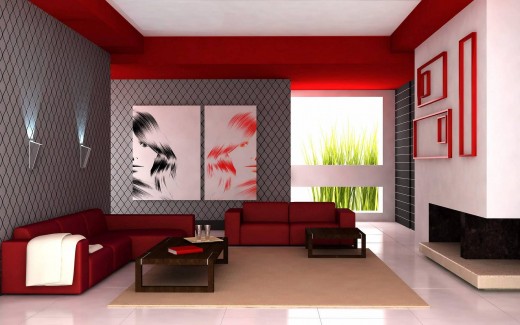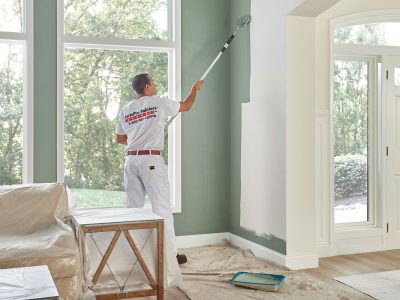Professional Color Consultation in Lakewood for Stunning Home Design
Professional Color Consultation in Lakewood for Stunning Home Design
Blog Article
Enhance Your Interior Decoration With Comprehensive Shade Appointment
The assimilation of shade assessment right into interior style provides an one-of-a-kind opportunity to refine and raise the psychological and visual vibration of a space. By involving with an experienced shade consultant, you can navigate the complexities of shade selection, making sure that your selections not just enhance building functions however likewise resonate with personal style and psychological effect.
Benefits of Color Assessment

Furthermore, shade consultation aids in taking full advantage of all-natural light and optimizing spatial perception. Lighter colors can make an area show up even more large, while darker tones produce an intimate setup. Cleveland Metro Painting Specialists. This calculated application of shade can dramatically affect the total atmosphere of any type of indoor area
Furthermore, expert specialists have a thorough understanding of existing fads and classic standards, making sure that the selected colors will stay enticing gradually. This insight can conserve clients from costly redesigns in the future. Shade examination equips clients by supplying them with a clear vision and direction, cultivating self-confidence in their design selections and eventually leading to a more gratifying and effective indoor design end result.
Comprehending Shade Psychology
The importance of shade psychology in interior design can not be overemphasized, as it explores the emotional and emotional effects that numerous colors can stimulate in individuals. Colors can affect mood, actions, and even performance, making them a crucial factor to consider in any layout project.
For example, warm colors such as red, orange, and yellow are often connected with energy and warmth. They can promote feelings of exhilaration and comfort, making them suitable for social areas like living rooms or kitchen areas. Alternatively, awesome shades like blue, environment-friendly, and purple tend to evoke calmness and harmony, making them ideal for bedrooms or meditation locations.
Furthermore, using neutral tones can create a balanced environment by enabling the bolder colors to attract attention without frustrating the detects. Understanding these psychological impacts enables designers to produce areas that not just look cosmetically pleasing however also promote psychological wellness.
Incorporating shade psychology into interior design involves a thoughtful selection of shades tailored to the intended function of each area, ultimately enhancing the general experience for its residents. This understanding is essential for accomplishing a harmonious and functional indoor environment.
The Shade Wheel Explained
Comprehending the partnerships in between hues is necessary for efficient indoor style, and the color wheel acts as a useful tool in this process. The shade wheel, created by Isaac Newton in the 17th century, illustrates the range of colors set up in a circular layout. It comprises primaries-- red, blue, and yellow-- that can not be developed by mixing various other shades. Visit This Link Second colors, formed by combining primaries, include green, orange, and purple. Tertiary colors result from blending his response a key and a secondary shade, bring about hues such as turquoise and red-orange.
The shade wheel assists designers realize the partnerships in between colors, consisting of complementary, analogous, and triadic systems. Complementary colors, positioned contrary each various other on the wheel, create vibrant contrasts that can stimulate a space. Similar colors, situated alongside each other, give a unified and natural look. Triadic systems use three evenly spaced colors, supplying balance and aesthetic rate of interest.
Using the shade wheel in interior design not only boosts aesthetic charm however likewise evokes particular feelings and atmospheres, making it an important reference for shade examination. Understanding these connections ultimately encourages designers to develop spaces that are both aesthetically captivating and useful.
Selecting the Right Scheme
An appropriate color plan can unify a space, boost its attributes, and stimulate desired feelings. Various areas serve different functions and need palettes that reflect their designated usage; for instance, serene shades such as soft blues or environment-friendlies work well in bedrooms, promoting relaxation.
Next, consider the all-natural light readily available. Light can substantially modify just how colors show up, so it is vital to examine the area at different times of the day. Furthermore, consider existing architectural components and home furnishings. A harmonious combination must complement these features, producing a cohesive appearance throughout the room.
When selecting shades, use the 60-30-10 guideline, which recommends that 60% of the space ought to be a leading shade, 30% an additional color, and 10% an accent shade. This proportion makes certain equilibrium and visual interest (Cleveland Metro Painting Specialists). Sample colors on the wall surfaces prior to devoting, as this permits visit the site you to see just how the tones interact with one another and the total setting they produce in your indoor design task.
Collaborating With a Shade Expert

When collaborating with a shade professional, the procedure commonly begins with an initial consultation. During this conference, you'll discuss your vision, preferences, and the existing elements in your area. The specialist will assess your requirements and may recommend specific color combinations that line up with your goals.
After establishing an instructions, the expert will offer samples and visual help to help you imagine the recommended color schemes. This action is essential, as colors can show up differently under varying lighting conditions.
Furthermore, a shade expert can assist you in picking complementary furnishings, art work, and accessories to integrate with your picked palette. By collaborating closely, you can accomplish a refined aesthetic that elevates your insides and creates an inviting ambience. Ultimately, the knowledge of a shade specialist can dramatically improve the general impact of your design job.
Conclusion
In recap, comprehensive shade consultation serves as an important tool for improving interior design. By leveraging expert understanding of shade psychology and spatial dynamics, a tailored shade scheme can be developed to evoke certain emotions and create an unified setting.
By involving with a seasoned color consultant, you can browse the intricacies of shade choice, ensuring that your options not just enhance building features but also reverberate with personal style and emotional impact. It makes up primary colors-- red, blue, and yellow-- that can not be created by mixing other shades.The shade wheel assists designers grasp the relationships between colors, consisting of corresponding, comparable, and triadic plans.When choosing colors, use the 60-30-10 rule, which suggests that 60% of the room ought to be a dominant shade, 30% an additional shade, and 10% an accent color. By leveraging specialist understanding of color psychology and spatial dynamics, a customized shade scheme can be established to evoke details feelings and produce a harmonious setting.
Report this page